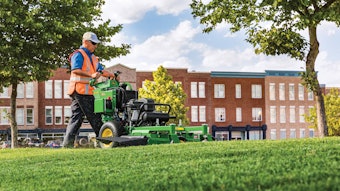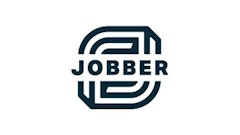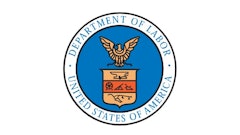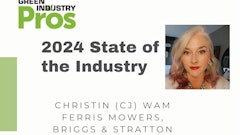We hear about it all the time. Green products, green services, recycle, save energy, reduce emissions, good for the planet. We are constantly bombarded by so many “green” messages that it has almost lost its meaning. What does it really mean to be green, and more importantly, does anyone really care?
Nowhere does being green, or more correctly, sustainable, have greater importance and relevance than in those individuals responsible for creating, maintaining and promoting green spaces in our society, America’s Green Industry.
Last year, I had the pleasure of working with a group of industry professionals in drafting the Professional Landcare Network (PLANET) Crystal Ball Report on sustainability. Most recently, during the 2009 Green Industry Conference (GIC) held at the Green Industry Equipment and Expo (GIE+EXPO), I had the opportunity to sit down with more than 40 landscapers and discuss their take on sustainability and what they thought it meant to their business. What I discovered from these two experiences should come as no surprise. Everyone was interested in improving operations and lessening their impact on the environment. However, the challenge was balancing this with the need to run a profitable business.
The Three P’s of Sustainability
So what is sustainability? The 2009 PLANET Crystal Ball Report encompassed the hard work of more than 24 Green Industry representatives who discussed, studied and presented information concerning environmental issues—and what they mean to the business.
Using a wealth of resources including the Sustainable Sites Initiative, EPA guidelines and the Green Gauge Report, as well as personal experiences, the group sought to provide a clear definition of sustainability and, thus, identify recommendations for the industry to follow.
The definition agreed upon was that sustainability meant conducting operations and using resources in such a way that the present needs were met, while not reducing the ability of future generations to meet their needs. In short, it came down to three points:
- Planet (taking care of the environment)
- People (caring for employees and ensuring their health, safety and well-being)
- Profit, (ensuring that businesses enjoyed a healthy, long-term bottom line)
Does Anyone Care?
Despite all the press dedicated to going green, the committee found that a low percentage of the population is actually willing to make significant changes in their lifestyle and pay a great deal more in order to be “green.”
Using data from the 2007 GfK Roper Green Gauge report, it appeared that only about 40% of the population surveyed would actually be willing to make some changes in their lifestyles, including paying more, while 60% would either buy green if it fit their specific need or were not interested at all.
These results coincide with a September 2009 article that appeared in Nation’s Building News. The article reported that only 11% of builders nationwide indicated that their customers ask about environmentally friendly features, and among buyers who are willing to pay more for green features, more than half (57%) are unlikely to pay more than an additional 2%.
Why Do It?
If the support for green is less than impressive, why should the industry embrace it? Landscapers at the GIC cited several reasons for pursuing a sustainable approach to their work. The first is regulation. While regulation seems self-explanatory, it was interesting to note that there appeared to be different levels of awareness when it came to existing or pending regulations and legislation that could seriously impact the Green Industry.
Some contractors appear to be deeply involved in issues such as water usage, pesticide restrictions and bans on power equipment like leaf blowers, while others appeared to be hearing about one or more of them for the first time. Tapping into resources provided by the Outdoor Power Equipment Institute (OPEI) and PLANET to get the latest information and guidance is critical. PLANET, for instance, has a legislative tool kit available that helps contractors stay aware of the latest developments and provides resources to help them protect their interests.
The marketing potential of sustainability was another key motivator for the landscapers I spoke with. Being able to present their existing and potential customers with information about their sustainable practices set them apart from their competitors.
Two important considerations were cited:
- Ensure that whatever was being offered was in fact for real and not “greenwashing”
- Ensure that the performance of the services could not be below that of their “non-green” counterparts.
In the end, performance and price were still the two key drivers for customers; however, given two relatively equal choices for price and performance, consumers would tend to pick the “greener” alternative.
Finally, profit potential was cited. Several of the most successful contractors had done significant operational cost studies and determined that taking steps considered sustainable had a direct impact on their bottom lines. Whether it was setting up recycling and mulching operations at their headquarters, which reduced their waste removal costs by as much as 90%, or switching to low-emission handheld equipment, which lowered their fuel usage by up to 26%, or installing low-energy lighting in their offices, these businesses took effective and measurable steps to reduce their operating costs, while at the same time providing them another story to use in their “green” marketing efforts.
An additional reason that should not be underestimated is the positive feeling that was shared by company employees in knowing they were taking part in making their operations more environmentally friendly.
In the end, members of our discussion panels wanted to remind their customers and the public in general that we all share the same environment, and we all want to have it clean and safe for ourselves and our families now and in the future.
Getting Started
Getting started on the road to sustainability is perhaps the most difficult step. The sidebar on page 7 shows some quick-start goals identified in the PLANET Crystal Ball Report.
Another suggestion was made by a contractor on our panel: Take a look at your financial reports and find the largest cost line items. Find ways to reduce each one through sustainable efforts. However, when deciding to get involved, it is important to heed some of the cautions offered up by the participants in our workshop. Their advice was to take it slow and do your homework to understand the full costs and benefits of any step you are considering. Ensure that measurable ROI targets are established and tracked.
Also ensure that you have communicated any steps you are taking to all of your employees and make sure they agree with the program. Too many times managers come back from a conference full of ideas and make sweeping changes only to have them fail because the individuals who have to implement them don’t understand or don’t support what is being proposed.
Don’t overlook the fact that often many of the best ideas for your operation come from the employees themselves. We recently changed the way we were handling cardboard boxes based on a suggestion from a forklift driver responsible for their disposal.
Looking to the Future
Regardless of your personal stance on the issue of sustainability, the fact is that the green movement is not a fad, it is here to stay. Whether to comply with federal, state or local regulations, increase profit, or just feel better about yourself and your operation, contractors need to embrace sustainable practices in their businesses.
At STIHL, our position is that, as an industry leader, it is our duty to practice socially responsible environmental stewardship in our operations and in our products. And as a member of the Green Industry, we believe that when it comes to understanding the relationship between people and ecology, there are few people more regulated, qualified, trained or educated in caring for the environment than those who interact with it on a daily basis.
By pursuing sustainability efforts we can leave a healthier environment as our legacy to future generations, and, in fact, do well by doing good.


























